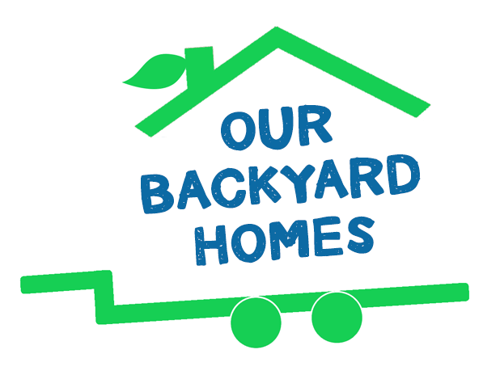The Porta Potty Itself
For the first phase of the build, we converted the wheelchair-accessible porta potty into a living space.
The interior was insulated and framed, boasting a blend of livability and aesthetics. It features a Murphy bed which, when folding up, reveals a functional workspace, seating for three, and storage for personal belongings.
We've included a solar-powered refrigerator, micro-a/c, and separate thermodynamic heating for the winter. Natural lighting illuminates the space through multiple windows and is supplemented by low-voltage LED lighting.
While the unit is designed for a single occupant, it does accommodate multiple overnighters for short-term stays. Thanks to how visually appealing the unit will be, folks will be in no rush to leave.
Beyond the Bedroom
The porta-home prototype is much more than the porta potty itself. It's a fully sustainable living space, a veritable micro-property atop a single trailer including a full bathroom, kitchenette, and rooftop garden.
At any given time we are testing various methods of sustainable water, power, and waste management that don't require hookups to the grid. The result is an energy- and infrastructure-independent home.
Designing around a porta potty presented some challenges, but we did so balancing needs for sustainability, functionality, and affordability.
Merging economy with functionality is our goal, testing and solving design flaws while proving the feasibility of sustainable living on a mere pocket of city land.
Energy-Independent
The unit's crown jewel is a trellised trailer, with a second-level garden providing organic shade, a destination for gray water, a functioning food source, and a touch of natural decor.
Below is an indoor/outdoor kitchenette and patio, primed for natural light and ventilation. A series of panels and batteries harnesses solar power. Locking storage cabinets, a sink and propane stovetop, and an area for eating and leisure complete the exterior space. We've employed both composting an incinerating toilets. Sink and shower are fed by an AWG creating water from thin air, with the waste water irrigating the rooftop garden.
Our micro-home is capable of being entirely self-contained. Not only is this a more sustainable way to live, it's a lot easier and less expensive than most legal on-grid alternatives. Which begs the question--why aren't there more of these?
The Build: Documentary Episodes
Watch the progression of the porta-home build captured on video. Click on TK Devine's Porta-Home Playlist Channel for mini episodes of each phase of the build, starting with the first visit to the PolyJohn factory. Pictured left is a summary of the first phase of the build.
